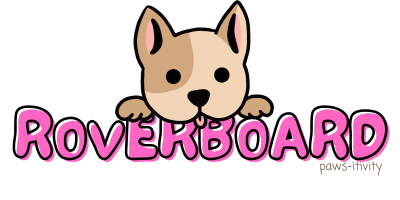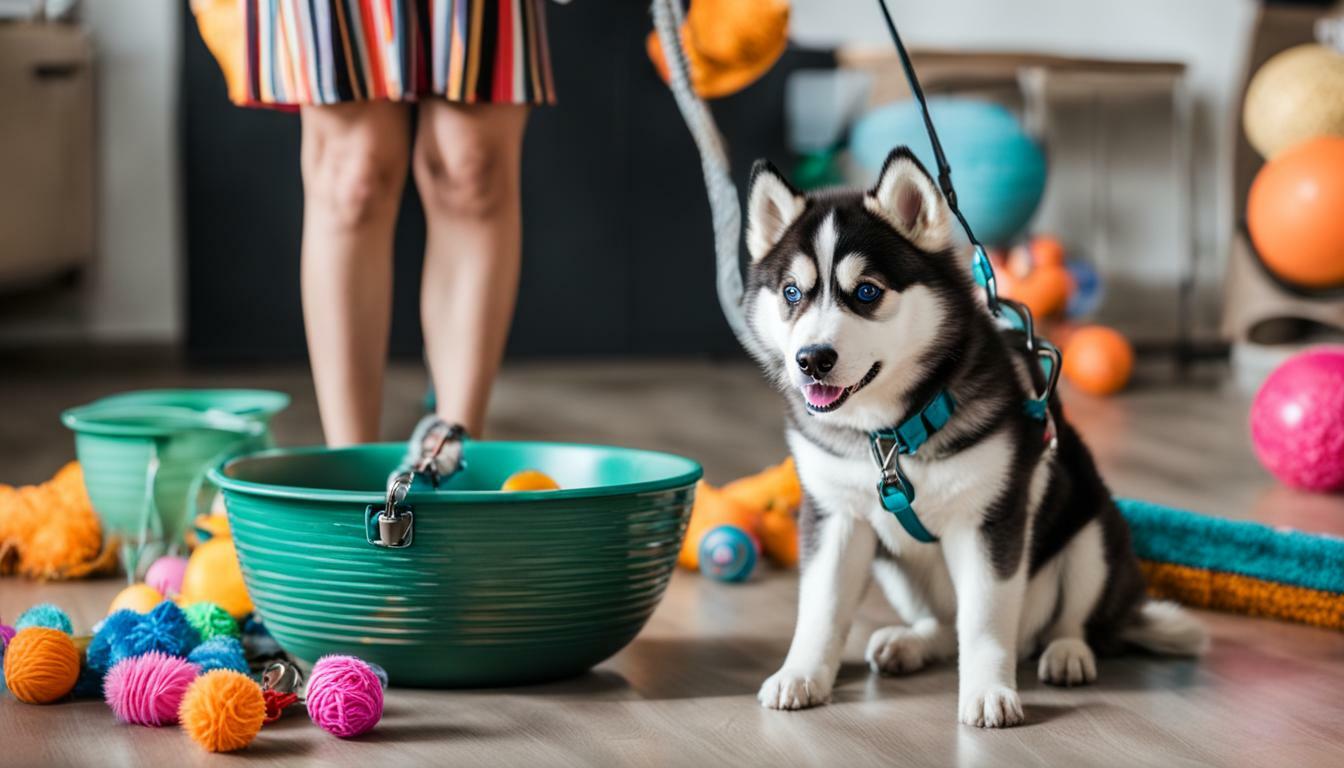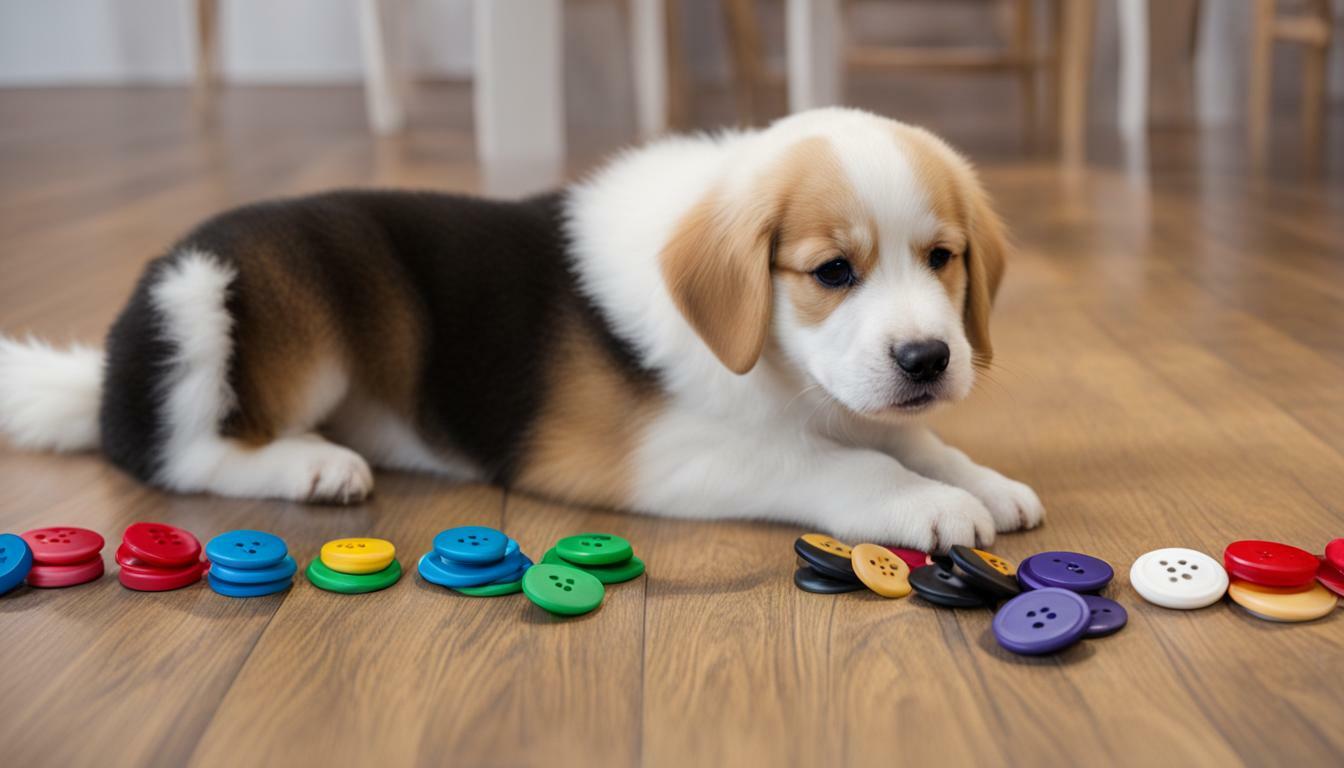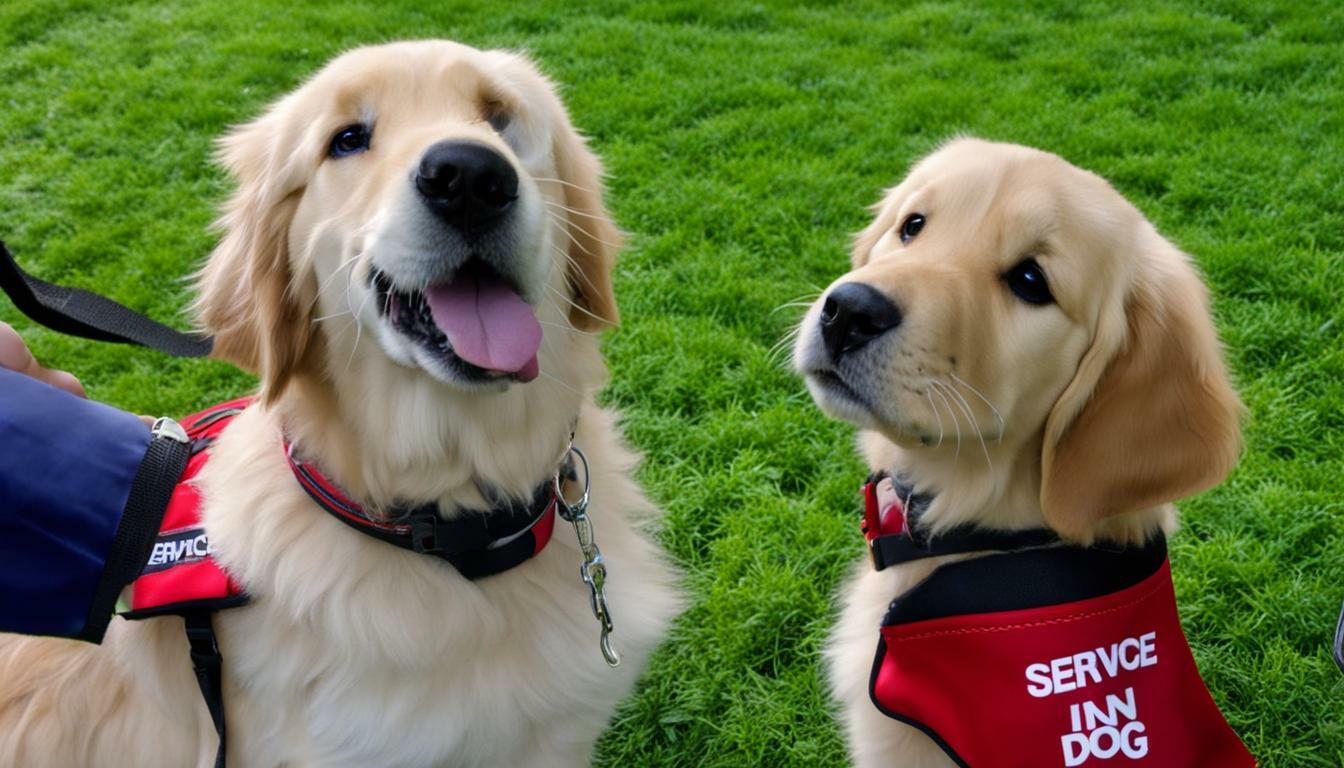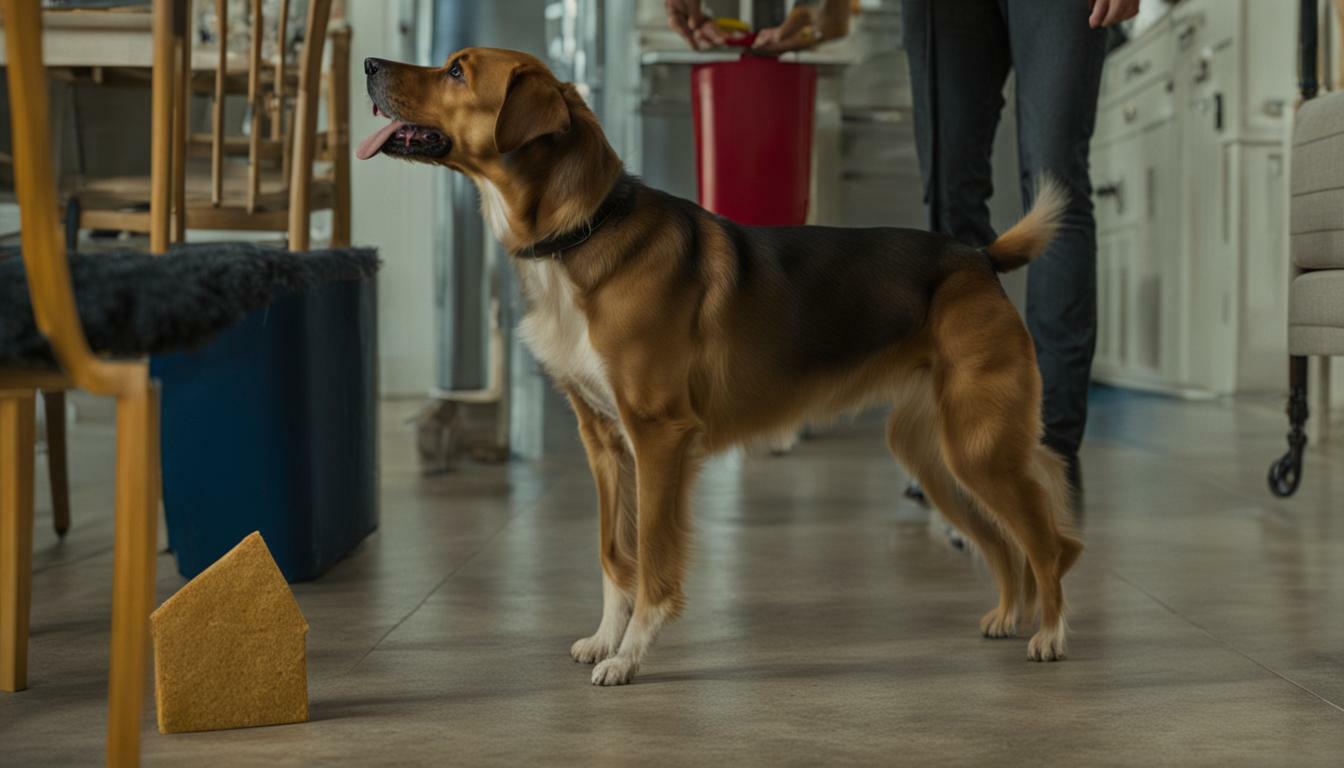Training a Siberian Husky requires patience, persistence, and determination. To ensure success, it’s crucial to understand the unique characteristics and needs of this breed. In our comprehensive Siberian Husky training guide, you’ll discover effective techniques and tips for obedience training and behavior management. Strengthen your bond with your Husky and master the basics of training with our expert advice.
- Understand the energy levels and exercise needs of a Husky to provide appropriate physical activity.
- Incorporate training into daily life by consistently using training commands and crate training.
- Positive reinforcement is the best training method for Huskies, using rewards and praise to shape their behavior.
- Gain insights into Husky needs, behavior, and instincts to address common training challenges.
- Create a personalized learning plan based on your Husky’s characteristics and motivation.
With the right approach and dedication, you can overcome any training challenges and successfully train your Siberian Husky. Stay tuned for the upcoming sections of our guide, where we delve deeper into specific training techniques, addressing common behavior issues, and formulating an effective training strategy.
Understanding the Energy Levels and Exercise Needs of a Husky
Huskies are known for their high energy levels, and it’s crucial to ensure they receive enough exercise to burn off excess energy. Training a Husky puppy requires understanding their unique energy requirements and implementing effective training techniques.
One of the most effective ways to manage a Husky’s energy levels is through regular exercise. These active dogs need daily physical activity to prevent boredom and destructive behavior. A combination of long walks, runs, and playtime is recommended to meet their exercise needs. Providing mental stimulation, such as puzzle toys and obedience training, can also help tire out their active minds.
Table: Exercise Recommendations for a Husky Puppy
| Type of Exercise | Duration | Frequency |
|---|---|---|
| Long Walks | 30-60 minutes | 2-3 times a day |
| Runs | 20-30 minutes | 2-3 times a week |
| Playtime | 15-30 minutes | Multiple times a day |
When training a Husky puppy, it’s important to remember that they can become easily distracted due to their high energy levels. Using positive reinforcement techniques, such as treats and praise, can help keep their focus during training sessions. Consistency and patience are key when teaching them basic commands and obedience.
Remember to tailor the training sessions to your puppy’s age and physical capabilities. Shorter sessions with plenty of breaks for play and rest will prevent them from getting overwhelmed or losing interest. Incorporating training into their daily routine will help establish a strong bond and ensure their overall well-being.
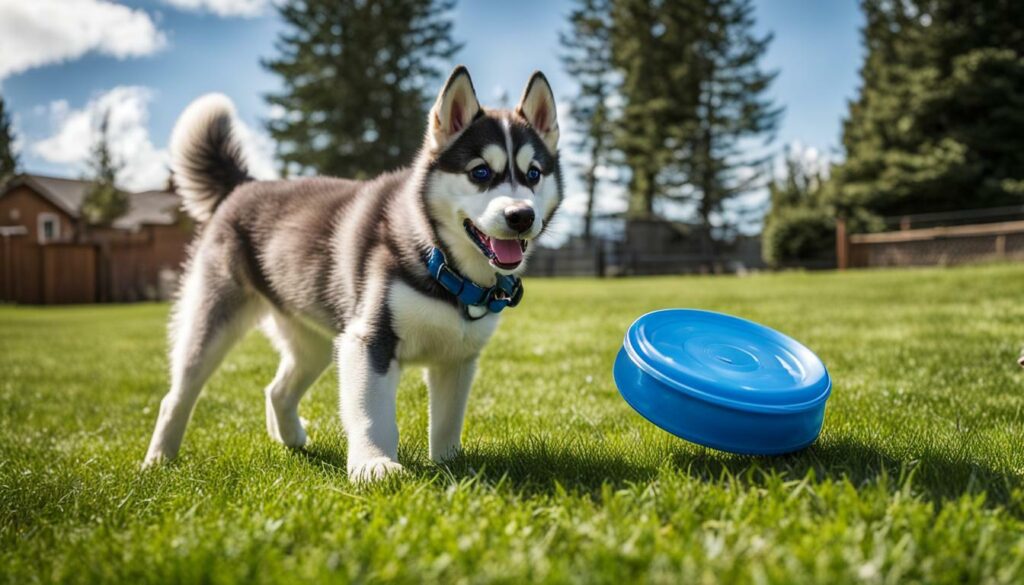
- Huskies have high energy levels and require regular exercise.
- Long walks, runs, and playtime are essential for burning off excess energy.
- Positive reinforcement techniques and consistency are crucial in training Husky puppies.
- Training sessions should be tailored to their age and physical capabilities.
- Incorporate training into their daily routine for a strong bond and overall well-being.
Incorporating Training into Daily Life
Make training a part of your daily life by incorporating commands into everyday activities. Consistency is key when it comes to training your Siberian Husky, and by seamlessly integrating training commands into your daily routine, you will reinforce good behavior and establish a strong bond with your furry friend.
One effective way to incorporate training into daily life is to use mealtime as a training opportunity. Before placing your Husky’s food bowl down, ask them to sit or stay, and only reward them with their meal once they have obeyed the command. This simple exercise teaches your Husky impulse control and reinforces their understanding of basic commands.
Another way to reinforce training is through walks and outdoor activities. Before heading out, make sure your Husky is calm and in a submissive state. Once outside, use commands such as “heel” or “leave it” to maintain control and prevent unwanted behavior. Reward your Husky with praise, treats, or playtime when they respond correctly, serving as positive reinforcement for their obedience.
| Benefits of Incorporating Training into Daily Life: |
|---|
| 1. Reinforces good behavior |
| 2. Strengthens the bond between you and your Husky |
| 3. Provides mental stimulation for your dog |
| 4. Creates a well-behaved and obedient Husky |
Remember to keep training sessions short and fun, as Siberian Huskies have a short attention span. By incorporating training into your daily life, you will not only improve your Husky’s obedience, but you will also create a harmonious and enjoyable living environment for both you and your furry companion.
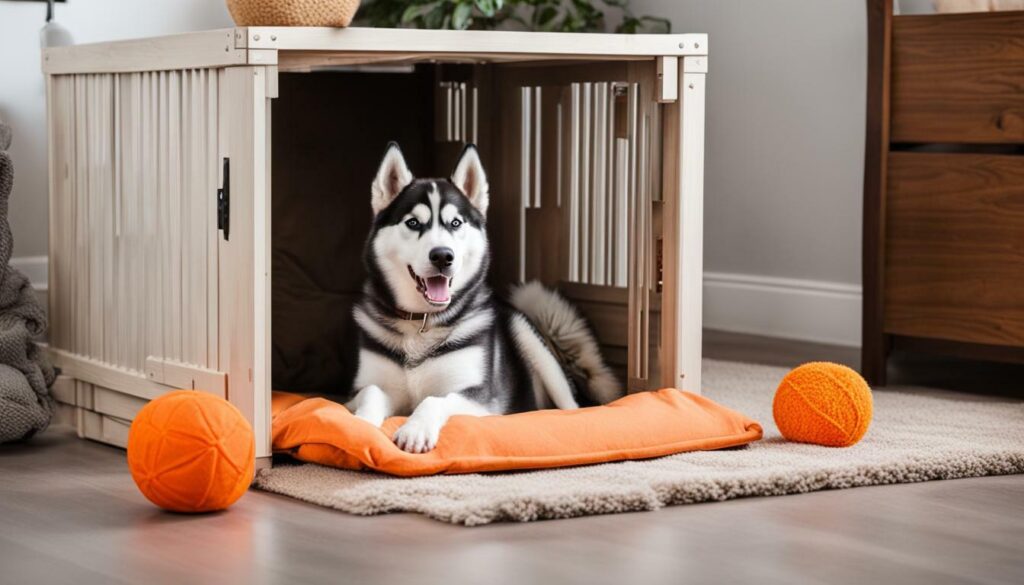
Positive reinforcement is key when training a Siberian Husky, whether it’s teaching them to walk on a leash or housebreaking them. This training method focuses on rewarding desired behaviors rather than punishing unwanted ones, creating a positive and enjoyable learning experience for your furry friend. By using treats, praise, and attention as rewards, you can motivate your Husky to follow commands and exhibit good behavior.
When it comes to leash training, positive reinforcement can be highly effective. Start by introducing your Husky to the leash gradually, allowing them to become comfortable with its presence. Then, reward them with treats and praise when they walk alongside you without pulling. Consistency is key in leash training, so be sure to reward your Husky every time they exhibit the desired behavior. With patience and practice, your Husky will learn to enjoy their walks and behave appropriately on the leash.
Housebreaking a Siberian Husky can be a challenging task, but positive reinforcement can make the process smoother. Create a routine for potty breaks, and provide your Husky with ample opportunities to relieve themselves in the designated area. When your Husky successfully goes potty outside, reward them with treats and praise. This positive reinforcement will reinforce the desired behavior and encourage your Husky to continue using the appropriate spot for potty breaks. It’s important to be patient and consistent throughout the housebreaking process to achieve long-lasting results.
| Benefits of Positive Reinforcement in Husky Training |
|---|
| 1. Encourages a strong bond between you and your Husky. |
| 2. Enhances your Husky’s motivation to learn and obey commands. |
| 3. Creates a positive and enjoyable training experience for both you and your Husky. |
| 4. Helps prevent fear or anxiety-related behavior problems. |
| 5. Builds trust and establishes a foundation of positive communication. |
Understanding Husky Needs, Behavior, and Instincts
To effectively train a Siberian Husky, it’s important to understand their unique needs, behavior, and instincts. These majestic dogs have a strong sense of independence and a natural inclination to run and explore. They were originally bred to pull sleds over long distances in freezing temperatures, which has shaped their instinctual behaviors.
Huskies are known for their pack mentality, which means they thrive in a hierarchical structure. Understanding dominance and hierarchy is crucial to establish yourself as the pack leader and gain your Husky’s respect. Consistency and clear communication are key when setting boundaries and enforcing rules. It’s essential to show your Husky that you are a strong and capable leader.
Aggression is another behavior that may arise in Huskies if they feel threatened or insecure. Proper socialization from an early age is vital to teach them how to interact with other dogs and people. Positive reinforcement training methods can help alleviate any aggression issues and build a strong bond between you and your Husky.
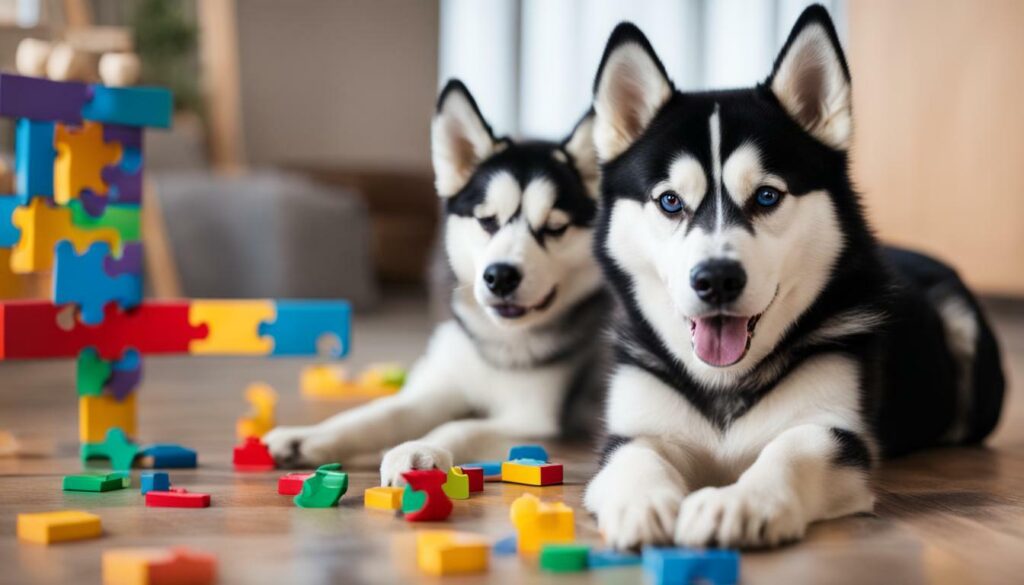
Food protection is another instinctual behavior in Huskies. They may become possessive or territorial over their food, which can lead to issues with resource guarding. It’s important to teach your Husky that you are in control of their food and that you can approach their bowl or take away their food without any negative reactions.
| Common Challenges in Husky Training | Solutions |
|---|---|
| Dominance and hierarchy issues | Establish yourself as the pack leader through consistent and fair training. Seek professional help if needed. |
| Aggression towards other dogs or people | Socialize your Husky from an early age and use positive reinforcement techniques to address aggression issues. |
| Food protection and resource guarding | Teach your Husky that you are in control of their food by using positive reinforcement and gradually desensitizing them to food-related triggers. |
| Running away and escaping | Ensure your Husky is kept in a secure and escape-proof environment. Use high-value rewards and teach them a solid recall command. |
| Excessive vocalization | Provide mental and physical stimulation to prevent boredom and address any excessive vocalization with positive reinforcement techniques. |
By understanding and working with your Husky’s needs, behavior, and instincts, you can effectively train them and build a strong and harmonious relationship. Remember to be patient, consistent, and use positive reinforcement methods to encourage desired behaviors. With time and dedication, your Siberian Husky will become a well-trained and well-rounded companion.
Develop a customized learning plan for your Siberian Husky based on their individual characteristics and willingness to learn. Every Husky is unique, and their learning capabilities vary. By tailoring your training approach to their specific traits, you can set your Husky up for success.
Start by assessing your Husky’s willingness to learn and their level of curiosity. Some Huskies are eager learners, while others may require more motivation. Use their natural curiosity to your advantage by incorporating interactive and engaging training techniques. For example, puzzle toys can stimulate their minds and keep them mentally engaged during training sessions.
Motivation is key when it comes to training a Husky. Use high-value treats or toys as rewards for good behavior and successfully completed commands. Incorporate positive reinforcement, such as praise and affection, to further motivate your Husky. Remember to be consistent in your reward system, as this helps establish clear expectations and reinforces desired behaviors.
Consistency is crucial in training a Husky. Set a regular training schedule and stick to it. Huskies thrive on routine, and consistency helps them understand what is expected of them. Use clear and concise commands, and be patient and persistent. Training may take time, but with consistent effort, your Husky will begin to understand what is required of them.
In addition to a customized learning plan, there are other key steps you can take to ensure successful Husky training. Crate training, for example, can provide a safe and secure space for your Husky when you’re unable to supervise them. It also helps prevent destructive behaviors and aids in housebreaking. Introduce your Husky to their crate gradually, making it a positive and comfortable space.
Remember, training a Husky requires time, patience, and dedication. It’s important to understand their needs, behaviors, and instincts to effectively train them. With a customized learning plan, consistent training, positive reinforcement, and a focus on their individual characteristics, you can master the basics and build a strong bond with your Siberian Husky.

The Importance of Positive Reinforcement and Consistency
Positive reinforcement and consistency are key elements in training a well-behaved Siberian Husky. This breed responds best to reward-based training methods, where they are praised, given treats, or shown affection for obeying commands. By focusing on positive reinforcement, you can create a strong bond with your Husky and motivate them to follow your instructions.
Consistency is equally important in Husky training. Dogs thrive on routine and predictability, so it’s crucial to establish clear rules and expectations from the start. Use consistent commands and gestures, and ensure that every family member enforces the same rules. This will prevent confusion and make it easier for your Husky to learn and obey.
Training Tips for Positive Reinforcement and Consistency
- Use treats, such as small pieces of dog-friendly food, as rewards for good behavior. This will motivate your Husky to repeat the desired actions.
- Pair verbal praise, like “good boy” or “well done,” with the treats to reinforce positive behavior. Your Husky will associate the praise with the reward, making them more likely to obey in the future.
- Set aside dedicated training sessions each day to work on specific commands, such as sit, stay, or come. Keep these sessions short and fun, ending on a positive note.
- Integrate training into everyday activities. For example, have your Husky sit before feeding them or wait patiently at the door before going for a walk. This will reinforce good behavior as part of their daily routine.
Remember, training a Husky takes time and patience. Celebrate small victories and be consistent in your approach. With positive reinforcement and consistency, you can shape your Husky into a well-behaved and obedient companion.
| Training Tips | Benefits |
|---|---|
| Use positive reinforcement | Rewards good behavior and strengthens the bond between you and your Husky |
| Maintain consistency | Establishes clear rules and expectations, reducing confusion and facilitating learning |
| Integrate training into daily routine | Reinforces good behavior as part of everyday activities, making training more effective |
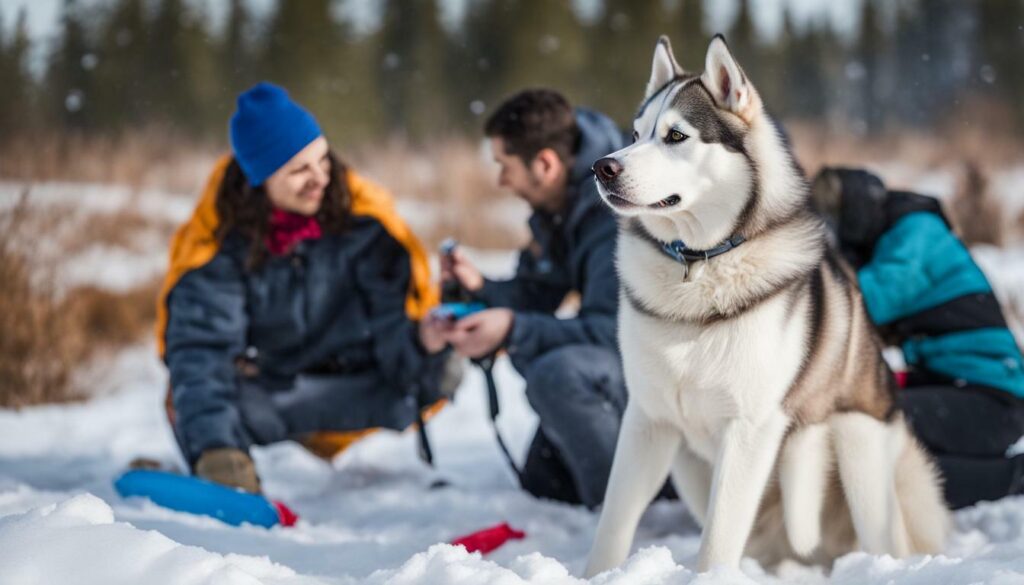
Crate training can be a valuable tool in training your Siberian Husky and preventing unwanted behavior. By providing a secure and comfortable space for your Husky, crate training helps create a sense of security and serves as a den-like environment, which aligns with their instinctual nature. It also aids in housebreaking and helps prevent destructive behavior when you’re not able to supervise them.
When introducing your Husky to crate training, it’s important to make it a positive experience. Start by choosing the right-sized crate that allows your Husky to stand, turn around, and lie down comfortably. Make the crate inviting by adding soft bedding, toys, and treats. Gradually acclimate your Husky to the crate by allowing them to explore it at their own pace and rewarding them for going inside voluntarily.
Consistency is key when crate training. Establish a routine where your Husky spends short periods in the crate throughout the day, gradually increasing the duration as they become more comfortable. Use positive reinforcement, such as praise and treats, when your Husky enters and exits the crate willingly. Avoid using the crate as a form of punishment, as this can create negative associations and make the training process more challenging.
Table: Tips for Successful Crate Training
| Tips | Description |
|---|---|
| Start Early | Begin crate training as soon as you bring your Husky home to establish good habits from the start. |
| Keep it Positive | Associate the crate with positive experiences by rewarding your Husky when they enter or stay inside willingly. |
| Gradual Introduction | Allow your Husky to explore the crate at their own pace, gradually increasing the duration of time spent inside. |
| Stay Consistent | Stick to a regular routine and be consistent with crate training to reinforce desired behavior. |
| Never Use as Punishment | Avoid using the crate as a form of punishment, as this can create negative associations and hinder progress. |
Crate training can be a positive and effective method to train your Siberian Husky, providing them with their own safe space and helping to prevent unwanted behavior. Remember to be patient and consistent throughout the process, and always use positive reinforcement to create a positive association with the crate.
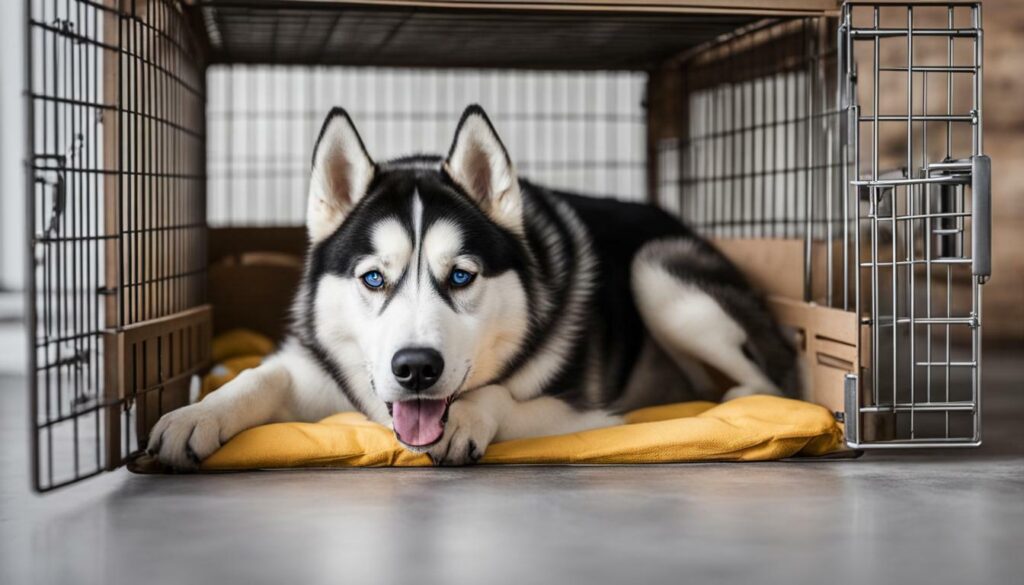
By following key steps and utilizing effective techniques, you can successfully train your Siberian Husky and build a strong bond. Training a Husky puppy requires patience, consistency, and positive reinforcement. Start by establishing a hierarchy and ensuring that your Husky understands their place in the family. This will help to address any dominance and hierarchy issues that may arise.
Next, focus on teaching your Husky basic commands using positive reinforcement. Use treats, praise, and attention as rewards when your Husky obeys commands such as sit, stay, and come. Consistency is key in training, so make sure to use the same commands and reward system every time.
Leash training is also important for Huskies, as they can be prone to pulling. Introduce your Husky to a martingale collar, which can help prevent them from slipping out of a regular collar. Practice walking on a leash in a calm and controlled environment, rewarding your Husky for walking beside you without pulling. Gradually increase the distractions and duration of the walks as your Husky progresses.
Housebreaking a Siberian Husky requires patience and consistency. Establish a routine for bathroom breaks and take your Husky outside frequently, especially after meals or naps. Reward your Husky for going to the bathroom outside and clean up any accidents indoors without scolding or punishment.
Finally, be prepared to address common challenges that may arise during Husky training. These can include aggression, food protection, running away, and vocalization. Understanding your Husky’s needs, behavior, and instincts will help you address these challenges effectively and find solutions that work for both you and your Husky.
Remember, training a Husky takes time and effort, but with the right approach, you can shape your Husky into a well-behaved and obedient companion. Stay patient, be consistent, and always prioritize positive reinforcement. Enjoy the journey of training your Siberian Husky and watch as your bond with them deepens.
FAQ
What are the key principles of Husky training?
The key principles of Husky training involve patience, persistence, and determination. Positive reinforcement is the best training method, where commands are followed before rewards or activities are given.
What are some common behavior challenges in Huskies?
Common behavior challenges in Huskies include dominance and hierarchy issues, aggression, food protection, running away, and vocalization. Understanding these behaviors is important for effective training.
How can I incorporate training into my daily life?
Training should be incorporated into your daily routine with your Husky. Commands can be practiced throughout the day, and crate training can be used to establish boundaries and prevent destructive behavior.
What is the best way to train a Husky puppy?
The best way to train a Husky puppy is through positive reinforcement. Using rewards, praise, and treats to reinforce good behavior will help shape their obedience and strengthen the bond between you and your puppy.
Why is consistency important in Husky training?
Consistency is crucial in Husky training to establish clear expectations and reinforce desired behaviors. Following through with commands and rewards consistently will help your Husky understand what is expected of them.
What are the benefits of crate training for Huskies?
Crate training provides a safe and secure space for your Husky and helps prevent destructive behaviors when they are unsupervised. It can also aid in housebreaking and establishing a routine for your Husky.
What are some effective techniques for Husky leash training?
Effective techniques for Husky leash training include positive reinforcement, using a martingale collar for control, and gradually increasing the duration and distance of walks. Consistency and patience are key in leash training.
How can I address aggression in my Husky?
Addressing aggression in your Husky requires understanding the underlying cause and working with a professional trainer. Consistency, positive reinforcement, and behavior modification techniques can help manage and reduce aggression.
What are the key steps for successful Husky training?
The key steps for successful Husky training involve establishing hierarchy, using positive reinforcement, crate training, utilizing a martingale collar, and maintaining consistency. Identifying and addressing specific behavior challenges is also important for progress.
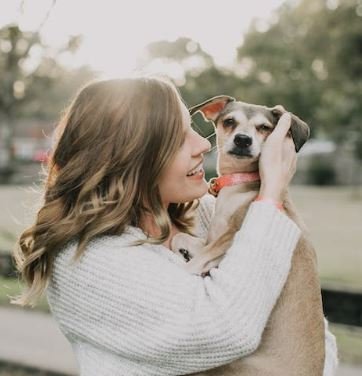
Marissa Delotta, 36, from Dayton, Ohio, is the creative force behind Roverboard.com, a beloved online destination for dog lovers. As a dedicated mom and canine enthusiast, Marissa combines her family experiences with her love for dogs to offer a platform where dog owners can exchange tips, heartwarming stories, and advice. Her website has become a vibrant community for sharing the joys of dog parenting. In her free time, Marissa enjoys exploring dog parks with her family and volunteering at local animal shelters.
